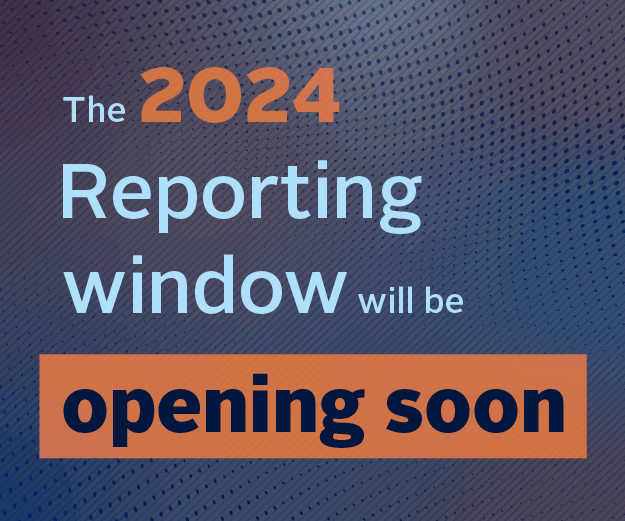This snapshot explores how and where approaches to incorporating ESG, active ownership and proxy voting in listed equities has changed since 2017. It paints a picture of current practices among our global signatory base. It is an online tool that provides public access to key elements of data from PRI’s annual signatory reporting. Each snapshot records data on a specific area of activity and other recent snapshots have included climate (2020) and fixed income (2019). This snapshot focuses entirely on listed equities covering integration, active ownership and voting practice. The data can be manipulated to show differences between geography, signatory size and type – providing a wealth of information about how ESG investing is changing.
How to use this report
The report is interactive and allows you to customise the data. When reviewing the data set in each slide there are a couple of things to remember:
- Most pages have a set of controls on the left-hand side that filter the data. These controls allow you to set filters on geographic region, signatory type (asset owner / asset manager), size and issue. You can select multiple boxes in a group by holding CTRL when clicking.
- To move to the next page click on the grey bar at the bottom and the arrows at the bottom right to expand the report.
- If you hover over any data points a box will appear showing further information about that data set including the denominator & numerator, % or AUM, data year and other information. Right clicking also shows the data in a summary data table.
We have summarised some of the key results below:
…on incorporation
Like 2017, screening and integration remain the most prevalent approach to incorporating ESG practices into an investment strategy. Signatories reporting ‘no strategy’ has declined from 12% in 2017 to 5% in 2020. This is a percentage of AUM, not a percentage of signatories. The increasing use of independent audit bodies was of note as signatories increasingly undertake reviews of screening practices. Inevitably, larger – better resourced investment managers and asset owners – were more likely to introduce these steps. European signatories utilised screening (standalone and in combination with integration) more frequently than in the US where integration is the most common strategy.
“While ESG integration is the most prevalent practice for investment manager Signatories, the emphasis over the last three years has shifted from deriving fundamental value from ownership to driving value through impact.”
Mary Jane McQuillen Member, PRI Listed Equities Advisory Committee Member. ClearBridge Investments
…on engagement
Different aspects of governance – such as company leadership & executive remuneration - were the issues which signatories reported they engaged on most frequently with portfolio holdings. Climate change was the most commonly referenced single issue.
There are some noticeable differences across the signatory base for example asset owners put a greater focus on climate change and diversity is a greater priority in the US compared to Europe.
“With the increased focus through the summer of 2020 on issues of racial justice, it’s interesting to note that diversity is the issue area with among the highest level engagement success, ESG investors may have helped bring corporate focus to this issue and helped prepare managements to react to broader public pressure, as well as have allowed investors to position their portfolios and thinking in line with changing societal norms.”
Elizabeth Levy Member, PRI Listed Equities Advisory Committee Member - Trillium
This survey was undertaken pre COVID – 19, so it will be interesting to see if social issues become more prominent in 2021. In 2020, the social issues that rank highly when engaging with companies include labour practices & supply chain, diversity and human rights. One other noticeable feature was the exponential increase in the reference to the UN Sustainable Development Goals in the reporting responses since 2017.
Approaches to engagement have also developed since 2017 – with involvement in collaborative engagements on the rise, jumping from 68% in 2017 to 83%. Asset owners and larger asset managers are more receptive to collaboration than other groups.
“While asset manager engagement with companies has increased, a mere 11% of managers indicate that most of their engagement activity involves more than 4 interactions. Given that sustainability transitions typically involve multi-year transformational processes, it is clear that the fund management industry must commit to a far more active and continuous level of long-term engagement to achieve authentic corporate sustainability progress.”
Alex van der Velden, Chair, PRI Listed Equities Advisory Committee Member, Co-founder and CIO, Ownership Capital
…on escalation
The 2020 data shows that more than 50% of all signatories would consider divestment and over 75% of the largest signatories would consider voting against annual reports or directors as escalation strategy where engagement has been unsuccessful. With European asset managers reporting a greater openness to considering divestment as an escalation strategy than US managers. Larger signatories record a broader range of escalation strategies after unsuccessful engagements and have a greater ability to track these engagements.
Despite the examples being self-selected, just 22% of them resulted in some type of change by the investee company. After a process of engagement, the most common result was an improvement in disclosure or some other commitment with diversity and executive remuneration recording the highest levels of success. Despite most signatories considering divestment as a viable option, it was a very unusual outcome of engagement – occurring in only 3% of signatory responses.
“We are pleased to see how many engagements have resulted in corporate actions—either disclosure or corporate changes….We look forward to more investors being able to use more of these tools to send strong messages about investors’ expectations of corporate environmental, social and governance practices.”
Elizabeth Levy Member, PRI Listed Equities Advisory Committee Portfolio Manager / Trillium
…on climate reporting
On climate reporting we have also seen some significant changes. In June 2017 we saw the publication of the final recommendations of the TCFD – just prior to the PRI’s last listed equity snapshot. Since then, these recommendations have provided a key framework for reporting on climate issues by investors and corporates. Despite progress across some of the TCFD’s core recommendations (governance, strategy and risk management), most signatories (71%) have not performed scenario analysis – a key step in the TCFD’s recommendation when integrating climate issues into investment practice.
…on proxy voting
Unsurprisingly, as most of these issues are standard at AGMs, voting on governance issues dominates – with shareholder rights, board structure, remuneration, and company leadership being the leading ESG issues which signatories vote on. We would expect voting on these issues to be a bare minimum level of activity. Climate change and diversity are the next most common issues. Diversity is again the key issue among US signatories. Most signatories do not seem to have developed a next step – more than 60% have no escalation strategy after an ‘unsuccessful’ vote. There is also little communication between managers and investees after votes against management recommendations. Notably, 26% of signatories reported that they followed up an unsuccessful vote by contacting the board and 29% contacting senior management.
We have highlighted some key aspects of the snapshot. We are sure you will find others. If you have any question please feel free to contact [email protected].














